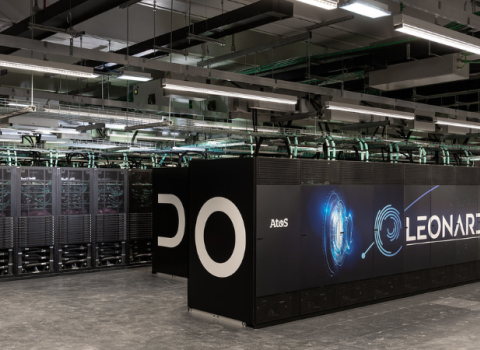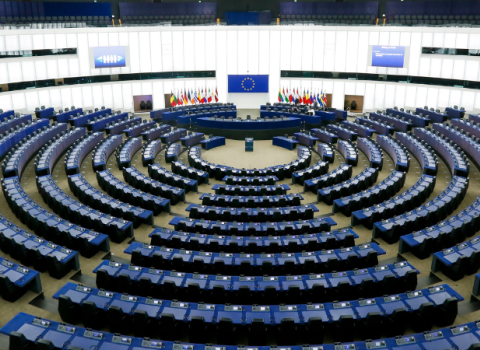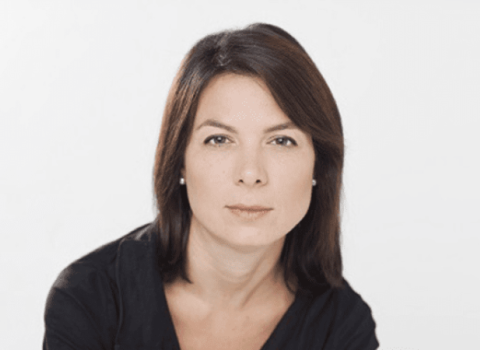Climate change can accelerate due to feedback mechanisms: complex phenomena caused by climate change which in turn can further boost climate change. One example of this is the additional CO2 emission from thawing permafrost. Research into the long-term influence of feedback mechanisms has already been going on for a long time, just like research into modern climate change, of course, but the connection between both has so far been underexposed. EMBRACER, a worldwide unique centre with prominent climate experts, will change that by means of a 10-year research project of 30 million euros, funded by the Dutch Research Council NWO. “This really is the next step in climate research.”"
EMBRACER stands for Earth systeM feedBack ReseArch CEntRe, a consortium of Utrecht University, the Royal Netherlands Institute for Sea Research (NIOZ), VU Amsterdam, Radboud University Nijmegen and Wageningen University & Research. “In the short term, up to halfway into this century, we have a good image of how climate change will play out,” tells Appy Sluijs, a Professor of Paleoceanography at Utrecht University. “But important feedback mechanisms work slowly and their full impact will only become visible in the upcoming decades to centuries. Even with rigorous climate measures, they will determine the climate on Earth long after 2100. However, we're lacking any scientific insight to anticipate its impact so far. So with EMBRACER, we're really making the next step.”
Bridging the gap
Within EMBRACER, 23 Dutch top-level researchers are working on a very broad palette of climate sciences: from earth scientists and geochemists to oceanographers, climatologists, polar researchers, hydrologists and ecologists. Thanks to this interdisciplinary approach and the connecting of research methods and timescales, EMBRACER bridges the gap between predicting short-term and long-term climate change. The need for this is shown by the fact that even in the best projections for the future, there is still little consideration for feedback mechanisms which are of great importance to timescales of decades up to millennia. “But these future projections are the foundation of climate policy,” Sluijs warns. “Which results in us maybe massively underestimating the rising sea levels or warming in the second half of this century.”
Thawing permafrost
Earth scientist Jorien Vonk of VU Amsterdam will focus on the feedback mechanisms of warming permafrost. This frozen ground contains approximately twice as much carbon as is currently in the atmosphere in the form of CO2. Enhanced thawing as a consequence of global climate change causes degradation of this carbon and production of CO2 or methane (CH4). “Our knowledge of the wide polar area is increasing and fortunately, the function of permafrost in the global balance of the Earth system is mentioned and recognised more and more often. However, the CO2 emissions occurring as a consequence of thawing are extremely difficult to predict because the local and regional variabilities are enormous,” Vonk tells. “I think that with the EMBRACER climate dream team, along with the many international colleagues we collaborate with, we can succeed in taking an important step and making a better assessment of how much this feedback will influence our emission reductions.”
The future of tropical forests
Within EMBRACER, the research at Wageningen University & Research (WUR) focuses on the fate of tropical forests. These are being threatened by climate change and deforestation, even down to the surrounding peatlands such as the Pantanal in the Amazon. Higher temperatures and longer draughts make trees vulnerable and drain the peat soil. “This puts us at risk of tropical forests becoming net CO2 emitters and making climate change worse in the process, while they were doing the exact opposite so far,” says Wouter Peters, a Professor of Carbon Cycles at WUR. An increase of the number of forest fires, WUR Professor Guido van der Werf's field of expertise, can play an important role in this too. Together with other researchers within the consortium, they are going to measure the CO2 flows in the atmosphere, forests and rivers to investigate the risk of many tropical forests disappearing, and to better understand what kinds of feedback on our climate this will eventually cause.
Increased methane emissions
The contribution made by biogeochemist Prof. Caroline Slomp (Radboud University Nijmegen) to EMBRACER consists of research into emissions of the greenhouse gas methane (CH4). “Worldwide, the emission of methane from lakes and coastal waters into the atmosphere is increasing more and more. Methane is a much more powerful greenhouse gas than CO2, so that is a really big problem. We know eutrophication plays a role: fertilisers from fields often leak into surface water, where they cause a strong growth of all kinds of organisms. Once these organisms die and start to decompose, you often get CH4. We want to investigate under which circumstances this CH4 comes about and escapes into the atmosphere. We can then also come up with measures to limit these emissions in the future.”
CO2 in the oceans
Within the project, Professor of Marine Geology at both the NIOZ and Utrecht University Gert-Jan Reichart will focus on the exchange between oceans and atmosphere, and how it will influence the uptake of CO2 in the ocean in the future. “If we look into the geological history, the ocean is the all-important factor for CO2 under normal circumstances. The atmosphere is a slave to the ocean, so to speak. But for the first time in millions of years, man has turned the tables: our CO2 emission now determines what happens in the ocean. This will no doubt have far-reaching consequences for the natural carbon cycle and with it for the development of atmospheric CO2 in the future.”
Ice and ocean dynamics
Oceanographer Oceanographer Dr. Anna von der Heydt of Utrecht University investigates how the feedbacks play out for ice and ocean dynamics, and their interactions with the carbon cycle. The polar icecaps and the Gulf Stream are both mentioned as potential tilting elements, which can undergo abrupt transitions with worldwide consequences. Although much is currently still unknown about these individual systems, their thresholds and dynamics, many of the feedbacks work on the intersection between these large-scale climate components. This means that the ocean circulation and the dynamic of the icecap are closely connected, also via their impact on the carbon cycle. Based on recent observations and climate records from the past, Von der Heydt and her colleagues at Utrecht University's Institute for Marine and Atmospheric research Utrecht (IMAU, a subdivision of the Faculty of Science) aim to study and improve the next generation of climate models for long-term future projections.
The geological past as a blueprint
Sluijs’ contribution to EMBRACER consists of research into climate changes in the geological past. “If the feedback mechanisms are important in the future, they were also important in the past. The reconstructions of climate changes based on sediments once deposited on the bottom of the sea show this too. After the last Ice Age, the permafrost in the Netherlands melted and 56 million years ago, a chain reaction of feedbacks caused a very big emission of CO2 and methane. Our challenge now is to make the reconstructions so well that they find out why such feedback mechanisms became active, how powerful they were and what influence they had on the climate. Combined with the current knowledge, this results in predictive value for the future.”
SUMMIT grants
The EMBRACER project is one of the five collaborations supported within the prestigious SUMMIT Programme of the Dutch Research Council. The SUMMIT grant recognises world-class collaboration, which can be further enhanced with it.
This article was first published 24 May 2024 by Utrecht University.





 A unique international forum for public research organisations and companies to connect their external engagement with strategic interests around their R&D system.
A unique international forum for public research organisations and companies to connect their external engagement with strategic interests around their R&D system.